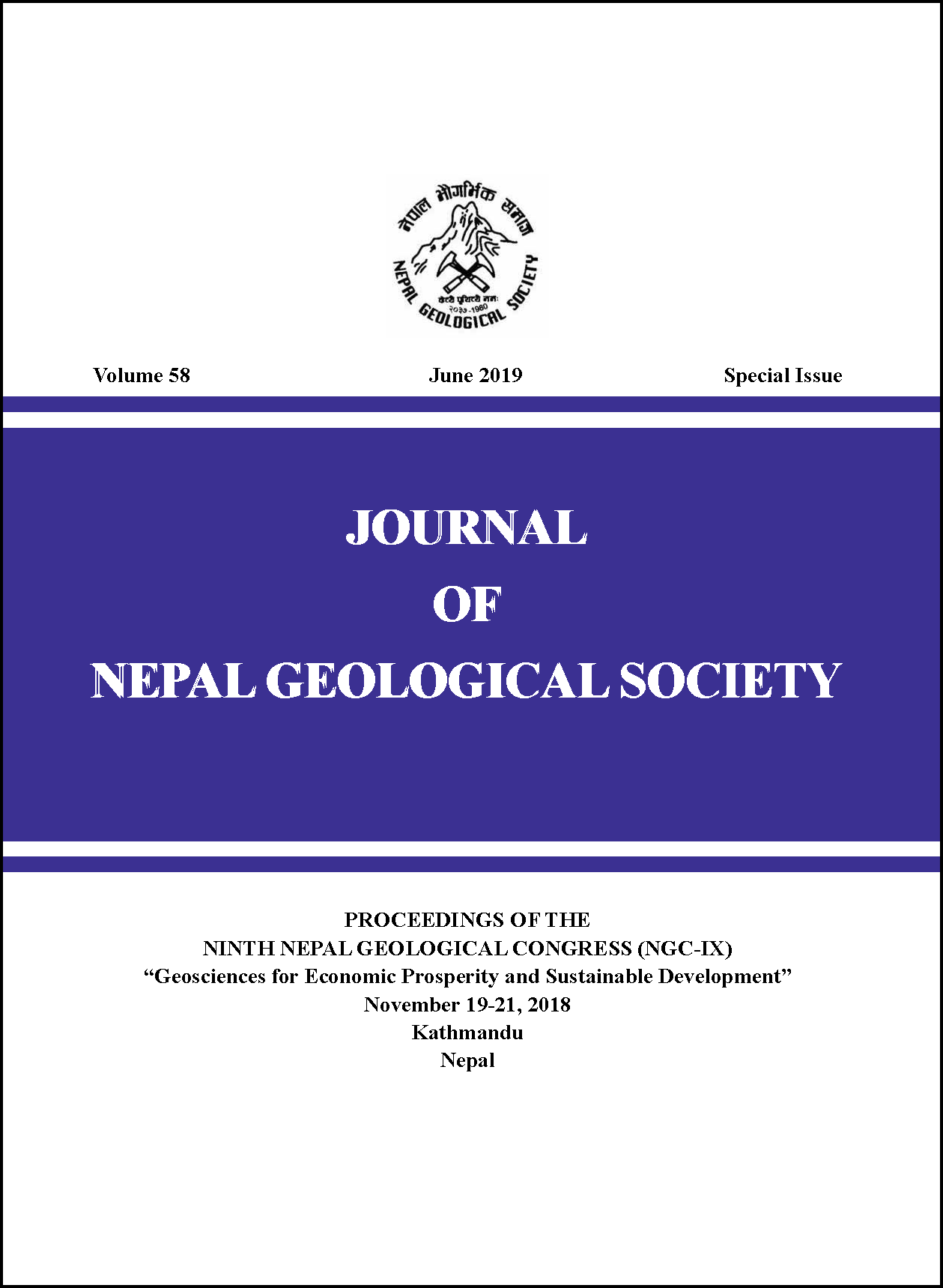Sequence stratigraphic analysis of the Surma Group in X Gas Field, Surma Basin, Bengal Delta
DOI:
https://doi.org/10.3126/jngs.v58i0.24572Keywords:
Depositional sequences, System tract, Sequence boundary, Incised valley, Seismic sequence stratigraphyAbstract
This study builds a high-resolution sequence stratigraphic framework for the Surma Group in the X Gas field. At first, electrofacies and depositional sequences were interpreted from wire line logs. Then, the field wide configurations of these sequences have been identified in seismic using reflection terminations (of flap, onlap, top lap and down lap relationship). Finally, wire line log and seismic interpretations were integrated to establish sequences stratigraphic framework in the Surma Group.
Electrofacies analysis has revealed four major facies associations namely: (i) Bell shaped fining upward facies corresponds to retrogradational shoreface to tidal flat deposits, (ii) Funnel shaped coarsening upward facies corresponds to progradational shoreface to tidal flat, (iii) Cylindrical aggradational facies interpreted as stacked channel and (iv) Symmetrical or Bow shaped facies corresponds to heterolithic unit. The succession of Surma group of about 3100+ m has been divided into twelve depositional sequences. With exception of depositional sequence 1, 11 and 12, most of them are composed of three system tracts: sandy lowstand system tract, shaley transgressive system tract and heterolithic to shaley highstand system tract. Repetitive occurrence of incised valley, shoreface sand as well as tidal channel sand separated by transgressive system tract shelfal mud resulted in sand-shale alternation in the Surma Group. The lower depositional sequences (up to sequence-6) are shale dominated and equivalent to the Lower Surma Group. The upper six sequences are sand dominated, have more channel incisions and sequence boundary representing the Upper Surma Group
Downloads
Downloads
Published
How to Cite
Issue
Section
License
© Nepal Geological Society




